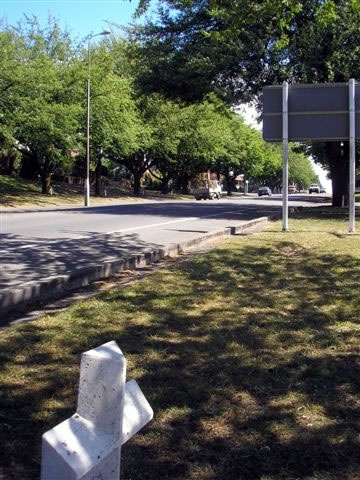
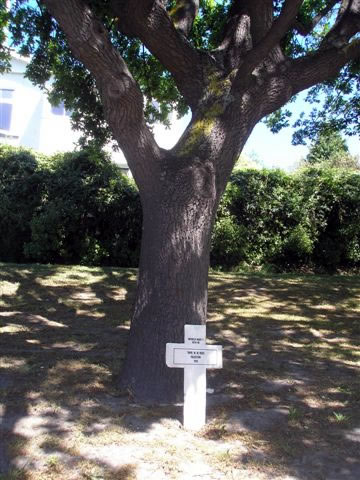
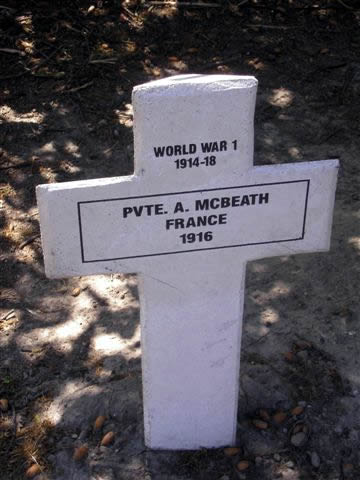
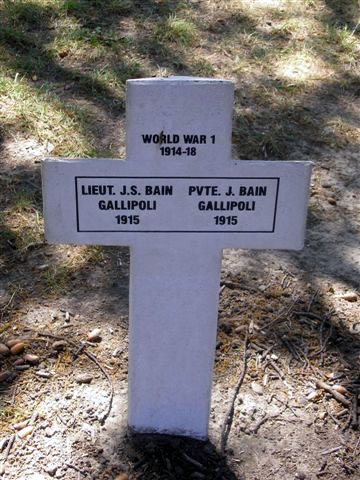
Visitors entering or leaving Oamaru via Severn Street pass through the start of New Zealand's largest war memorial, the North Otago memorial oaks.
In 1919 locals planted 400 oak trees in North Otago, one for every serviceman from the district killed during the war. They were planted in the form of a wheel, the hub being in central Oamaru, and radiating out both north and south into the countryside (where they were planted at one-mile intervals). Where possible, the oaks were planted near the home of the serviceman they commemorated.
While many of the trees flourished, disease, road works and vehicle crashes took a toll of others. In the early 1990s North Otago groups began to replace the old wooden marker posts with more durable white concrete crosses. It is an ongoing project and is maintained by a group of local volunteers. Most crosses record a man and his place and year of death, but as the cross to the Bain brothers shows, several commemorate multiple sacrifices.
Further images of the memorial oaks
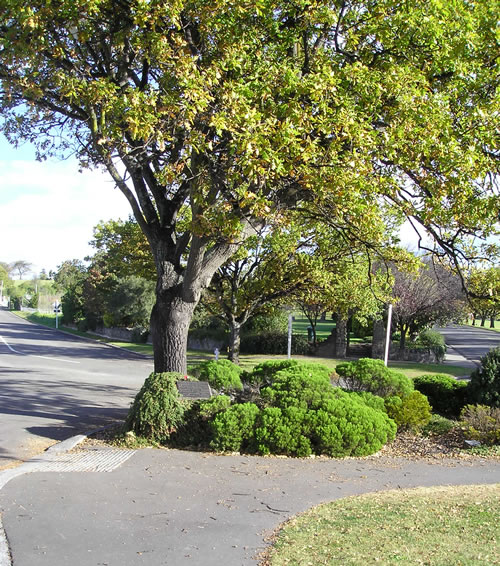
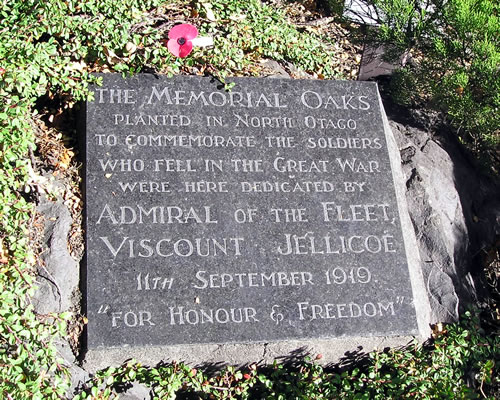
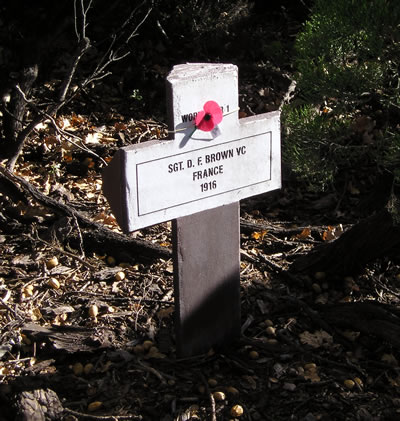
A large basalt boulder with engraved granite plate records the unveiling by Viscount Jellicoe on 11 September 1919. The adjacent Oak tree may be the first planted and the concrete cross which is typical of the Memorial Oaks (which have a tree and a cross and are everywhere in North Otago), is dedicated to Sgt D. F. Brown VC who was killed in France in 1916.
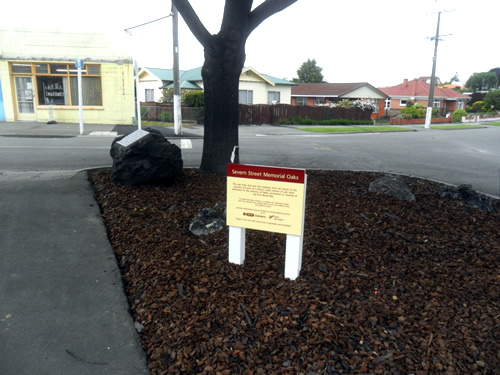
The new bark garden and sign added in 2013
Other North Otago groves can be found at Kakanui, Maheno, Glencoe Domain, Ardgowan School, and Hampden.

Community contributions